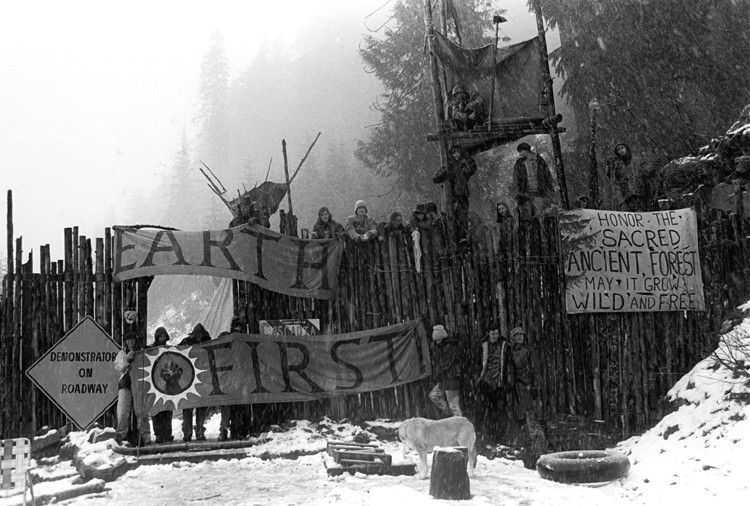Born from the forest defense movement of the 1990s, Cascadia Wildlands has grown into a powerful force protecting the wild landscapes, species, and communities of the Cascadia Bioregion.
Cascadia Wildlands was born out of the forest defense movement of the 1990s, where passionate students, community members, business owners, scientists, and forest advocates in Eugene, Oregon, took direct action against rampant clearcutting on federal public lands in western Oregon.
Implementation of the notorious Salvage Rider, Clinton-era federal legislation that suspended environmental laws pertaining to the protection of our old-growth forests, elicited a grassroots response felt around the country. Ensuing civil disobedience campaigns were initiated around the region, culminating in a 343-day blockade of Forest Service Road 2408 east of Oakridge, Oregon — the only road into the contested Warner Creek post-fire clearcutting proposal. The encampment, sustained by riff raff with a strong distrust of government, donated bagels, and dumpstered vegetables, became known as the Cascadia Free State and ended in victory after the cancellation of the proposed clearcutting due to widespread public opposition.

After tasting success, those involved early on commandeered computers, telephones, printers and meeting space in the University of Oregon’s Survival Center to map out, field check and appeal other nearby public land clearcutting proposals, and organize the public into action. Success began to mount, which inspired more action.
Originally named the Cascadia Forest Monitoring Project in 1997, the budding organization began to plant its roots as a 501c3 non-profit organization under the fiscal sponsorship of the League of Wilderness Defenders. The moniker changed to Cascadia Wildlands Project in 1998 and was shortened to Cascadia Wildlands in 2009. Through the rebrands and ups and downs, the mission and vision has largely remained unchanged.
While Cascadia Wildlands now primarily focuses our efforts in western Oregon, our campaigns have spanned the entire bioregion. Cascadia Wildlands had a field office in Cordova, Alaska from its early days through 2017 and worked closely with the Eyak Preservation Council, Greenpeace, Crag law Center and other allies to stave off exploitation in the famed Copper River watershed and the Tongass and Chugach National Forests, known for their salmon runs, grizzly bears, and glaciers. From legal victories that set binding precedent across the Ninth Circuit to our ongoing recovery of the gray wolf in Washington, Oregon, and Northern California, Cascadia Wildlands takes steps to ensure the entire Cascadia bioregion flourishes.
Over the years, the organization has honed our tactics and strategies, and conservation success has been made possible by the generosity of like-minded individuals, business owners, and grant making foundations. Throughout Cascadia Wildlands’ life span, one attribute has remained consistent: a burning passion to safeguard Cascadia’s unparalleled landscapes, unique species, and free-flowing rivers.
We are constantly winning our legal and grassroots campaigns — read more about our recent wins here.


